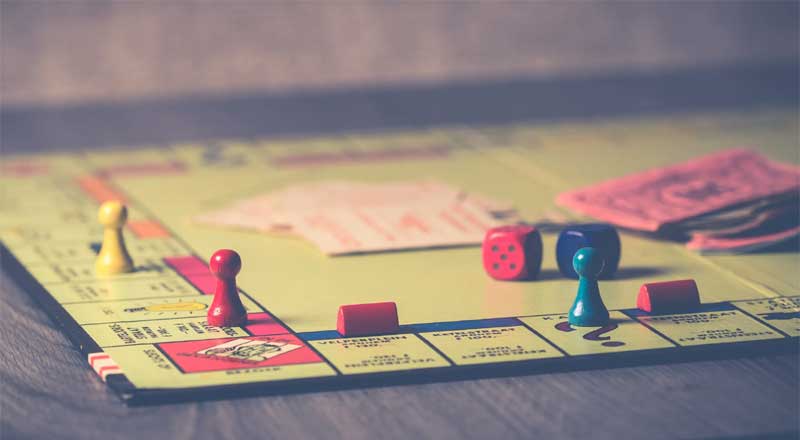15 Ways to GO GREEN and STAY SANE
1. CLEAN KINDLY.
* Use: Plant-based, Biodegradable Soap and Detergent
* Loose: Chlorine Cleaners
* If ingredients are not fully disclosed (or you can’t pronounce them), choose a product you can trust!
The products we use to wash wipe, scour, scrub, polish, and deodorize have a tremendous influence on our quality of life at home and in the outside world. The idea of living amid lingering fumes and watching our kids play where intractable residues of chemicals reside is one worth questioning and one that can easily be changed. As is the concept of washing products down the drain that will harm the ecosystem and ultimately pollute the water our children drink. Green cleaning isn’t a privilege or a luxury, and it isn’t restricted to a certain ZIP code. The beauty of being green is that it not only serves the planet, but serves us, too. It fulfills our part to make this world a better, cleaner, safer place, starting in our very own homes.
2. Choose Natural Personal Care & Cosmetic Products
Choose pure products with pronounceable plant-based ingredients. Opt for natural beauty and grooming that harness plants instead of petroleum and natural fragrances and colorants instead of chemical constituents. It will do your body and the planet a gorgeous world of good.
Soap & Body Wash: plant-based soaps without synthetic fragrances or colors are naturally biodegradable – better for you and the planet
Face & Body Moisturizers – products with pure, plant-based and botanical ingredients will keep your skin hydrated and healthy without chemicals and synthetic preservatives
Hair Care – choose natural products, sans petro-chemical foaming agents and paraben preservatives, for lustrous locks
Deodorant & Antiperspirant – go for naturally effective products and duck away from those with aluminum and other chemicals
Attention Ladies! Choosing organic, naturally bleached feminine products is a wise health-savvy, eco-smart move for your precious body and the planet
3. GO FOR P-C RECYCLED TP, PTs, AND TISSUE
Majestic trees are too precious to put in the toilet or the rubbish. Go for post-consumer recycled paper goods. I am not suggesting sandpaper-grade toilet paper or tissue on your bum or tender nose – there are fluffy white recycled-content varietals made snowy white via oxygen bleach instead of dastardly chlorine. Ditto for paper towels.
4. INSTALL A WATER FILTER
Clean, safe water without all the waste. Brilliant. Less plastic water bottles, less energy and fuel for water delivery. Fresh clean water is a necessity, not a luxury.
HOW MANY, HOW MUCH
* 40 million: number of plastic water bottles disposed of EVERY DAY in the US
* $15 billion: spent on bottled water annually in the US.
* Health + Saftey about tap water: the main reason a majority of bottled-water-drinkers do so (1)
* 60%: proportion of municipal facilities across the country violate their Clean Water Act permits (2)
* 2,100: number of known contaminants and toxic chemicals the EPA estimates to be in US drinking water, several of which are known poisons and carcinogens (4)
Water filter anyone?
5. BRING IN HOUSEPLANTS!
Houseplants literally grow fresh air – producing clean, fresh oxygen and pulling out chemicals like formaldehyde and benzene at the same time.
HOW MANY, HOW MUCH
2 to 10 times: how much more polluted indoor air is than outdoor air according to EPA estimations (4). The culprits? – Synthetic materials, chemical cleaning products, plastics, furnishings like carpets, couches, and mattresses, and chlorinated water to name a few.
1 to 2: number of plants per 100 square feet to provide fresh air and healthy mold-free humidity in any room so everyone can breathe deeply with ease.
6. KICK OFF YOUR SHOES
Removing shoes at the door is not just a pleasant custom, but also prevents tracking in a host of unwanted grub like pesticides and herbicides into your home. Other shoe hitchhikers include weed-killers, lawn chemicals, lead, toxic cleaners and wood preservatives.
It’s as common sense as washing your hands before eating or covering you mouth when sneezing and especially true for homes clad with carpet, where all that nasty stuff rubs off and accumulates.
HOW MANY, HOW MUCH
# 2: cause of exposure to dangerous pesticides in homes that the “track in” route on shoes is suspected of. # 1? conventionally grown fruits, vegetables and animal products (5).
Get a Welcome Mat – A doormat outside and a entry-way rug inside are also limit pesticide track-in and prevent them from migrating through the house. Simple, smart, and they look nice too.
7. PLANT A TREE EVERY YEAR
Trees are the lungs of the planet. They heroically sequester (remove) CO2 from the atmosphere; store it as cellulose in their trunks, limbs, branches and roots, and generously release oxygen in its place. That is a sophisticated service – making our very lives possible and with potential to offset and reverse current greenhouse gas pollution. About half of the greenhouse gas effect, which is causing global warming is from CO2 emissions.
HOW MANY, HOW MUCH
30 million: number of more trees that would absorb CO2 in the atmosphere and produce fresh oxygen if only 10 percent of the U.S. population planted just one.
50 lbs : amount of CO2 a year a single mature tree can absorb – which is enough oxygen to sustain 2 adults (6).
120 to 240 lbs : amount of toxic pollutants a mature tree absorbs per year (7), including gaseous pollutants like sulfur dioxide from coal-burning power plants, nitrous oxides from vehicle exhaust
1 billion lbs : amount of CO2 that would be reduced annually if every American family planted just one tree a year – which is about 5% of the worldwide output (8).
100,000 gallons: amount of rainfall just 100 mature trees can catch and intercept from running off (9)
47˚F : number of degree
s cooler the interior of a car parked in the shade vs. sun (10)
5% to 9% : average increase in property value of equivalent homes that are well landscaped with mature trees (11, 12)
8. GET OFF OF JUNK MAIL
Do you know anyone who likes junk mail? Me neither.
HOW MANY, HOW MUCH
62 billion : number of pieces of junk mail delivered in the US every year (13) – which comes to 41 lbs per citizen (14).
5.8 million tons : amount of paper used to prodoce catalogues and unsolicited wads of pre-approved credit cards and that arrive to our homes annually (15)
44% : average amount of junk mail that gets thrown away unopened (16)
100 million: estimated number of trees it takes to produce those catalogs and unsolicited mail
28 billion gallons: amount of water to do so too (17)
There are ways to get off unsolicited and junk mail lists and reduce the hemorrhage of waste. It takes a little time and effort- so be persistent! Our planet is worth it.
o Green Dimes – they’ll do it for you.
This non-profit organization that will reduce the marketing to your home, help maintain your privacy and plant a bunch of trees on your behalf. For a dime-a-day ($36/year), they will stop what you want them to stop – meaning you can get the catalogues you like and forget the rest – including contacting the DMA (Direct Marketing Association) to nip national and direct marketers in the bud. They will plant a tree every year you stay on with them and are on call 7 days a week for questions and help.
Greendimes.com
DO IT YOURSELF:
o Contact Credit Bureaus – To Stop Credit Card Offers
o optoutprescreen.com | The Consumer Credit Report Industry’s official website to accept and process “Opt-Out” requests
o Or call them: 888-5-OPTOUT (567-8688)
o Direct Marketing Association – To Get Off Mailing, Marketing and Telemarketing Lists
o Register on-line at dmaconsumers.org/consumerassistance.html
o Stop Having your Name Sold – You can specifically request you’re your name not be lent, sold or traded when you order something on-line or over the phone. Do it when renewing subscriptions and returning a warrantee card. When you make purchases on-line, make a note in the comment box that you don’t want your name shared for any purposes without authorization. A little persistent effort pays, and the forests and icecaps thank you.
Tip: Avoid having your name sold to advertisers by specifically requesting that your name not be lent, sold or traded to any other organization for their mailing lists whenever you send a check for donations, for mail order purchases, to renew subscriptions or when returning a warranty card.
9. Don’t be a Drip
Save money and water resources: fix leaky faucets and toilets
HOW MANY, HOW MUCH
3,000 gallons : amount of water a leaky faucet or shower that drips at the rate of one drip per second can waste a year (18).
2,000 gallons : amount of water a leaky toilet can waste a day (19)
Next Green Step: Sink aerators, low-flow shoer heads and toilets
10. Be Wise with Laundry
o Wash full loads – get the most out of water and energy use
o Rinse Laundry on Cold Water Cycle – 85 to 90 percent of energy used to wash clothes is to heat water (20)
o Use Plant-based, biodegradable detergent without chemical fragrances or dyes
o Opt out of chlorine bleach. Choose oxygen bleach instead – color-safe, fabric-friendly, and eco-brilliant
o Hang Dry what you can – save energy, money and extend the life of your clothes
Next Green Step: When you’re up to bat for a new washer or dryer, look for high-efficiency models to save a bundle of energy, water and money in the long-run.
See Chapter 6 – Eco-Smart laundry for details, tips and products
11. GO ORGANIC
Buying and eating organically grown food is one of the singly most eco-powerful green choices period. Certified organic methods to grow food do not use human-harming and planet-damaging petro-chemical fertilizers and pesticides. Organic farming methods fortify soil naturally and consistently show to be more energy efficient, produce less waste, and sustain a more diverse ecosystem (populations of plants, animals, and insects) than conventional farms.
12. GO LOCAL
Buying locally grown food means less fossil fuels went into trucking it to you. That’s a good thing because these days it’s not just common to ship food around the country, it’s shipped all over the world! The average morsel of food travels about 1,300 to 1,500 miles from farm to plate in the U.S. (21) (22) (23). That’s some well-traveled food! Some estimate that it takes almost as much energy to ship food as it does to grow it (24) (25). That’s a lot of energy. The jury is out on the exact figure, but it takes more energy (calories) to produce and ship food today than we actually get from it (26) (27) (28). A rough estimate illustrates that 120 million tons of C02 emissions are directly attributable to domestic food transport each year, and U.S. imports and exports likely account for an additional 120 million tons (29). Buying locally grown food is a simple way to change that equation for the better and get the most for your money.
The bottom line is local food is fresher, tastes better and saves and undue amount of energy. Everybody wins.
13. Eat Veggies / Go Veggie 1 day a week
Beyond being a solid source for a full spectrum of good stuff – vitamins, nutrients, minerals, antioxidants, and phytonutrients – a plant-based diet requires a lot less energy and water to keep you well fed. Meat is the least energy-efficient food on the planet, requires a serious amount of water and is a major polluter. Beef requires 35 calories of energy for every one calorie it provides (30). That doesn’t sound like a very good investment – imagine someone asking for a $35 investment for a $1 return. Cows are thi
rsty: to producing just one pound of beef requires 2,500 gallons of water – that’s 40 times more water than it takes to produce a pound of potatoes (31). Get this, eating just 2 to 4 pounds less meat a year will save as much water as not showering every day for a year*. 11 billion pounds of All that waste in turn off-gasses VOCs (volatile organic chemicals) (32), hydrogen sulfide (33), ammonia (34), endotoxins (35), and methane gas (the #2 greenhouse gas causing global warming with 20 times the heat-trapping of carbon dioxide (36). The livestock industry alone is responsible for almost 20 percent of methane in the atmosphere (37). Leaning towards a plant-based diet, or even going veggie just one day a week is a powerfully green choice. Your body, fresh water supplies and ice caps everywhere will rejoice.
HOW MANY HOW MUCH
130 times more : amount of waste generated by livestock compared to humans (38)
11 billion lbs : amount of manure, sludge and slurry waste are produced by livestock every year (39), including VOCs (volatile organic chemicals) (40), hydrogen sulfide (41), ammonia (42), endotoxins (43)
20% : amount of methane gas produced by livestock – the #2 greenhouse gas contributing to global warming (44)
20 times more : the heat-trapping capacity of methane compared to CO2 (45)
*Water figures based on average of two calculations:
• 5 minute shower a water-conserving showerhead (2.5 gallons/minute) x 365 days = 4,562.5 gallons water/year (2 pounds meat = 5,000 gallons water)
10 minute showers under and an ordinary showerhead (5 gallons/minute) x 365 days = 9,125 gallons water/year (4 pounds meat = 10,000 gallons water)
14. GET A TRAVEL MUG +REUSABLE BAG
Just do it.
HOW MANY HOW MUCH
14.4 billion : number of paper coffee cups disposed of in the US every year (46)
100 billion: number of plastic bags used in the US per year
12 million barrels : amount of oil used to make that many plastic bags – http://www.worldwatch.org/
6% : average amount of plastic recycled in the US
1,000 years: the length of time it takes a plastic bag to break down (47)
No: answer to the question “does plastic ever truly break down” – it photodegrades into smaller toxic bits, contaminating the soil and water and entering the food chain (48)
187.5 million pounds : amount of waste that could be saved if every American used just ONE LESS grocery bag
GOOD TO KNOW
Most paper coffee cups are not only bleached with dastardly chlorine, they are also lined with a thin film of plastic to prevent leakage – a significant impact on the waste stream and a waste of enough petroleum to heat 8,300 homes (49).
15. RECYCLE YOUR CELL PHONE
Just do it
HOW MANY, HOW MUCH
250 million : number of Americans that have a cell phone
18 months : the length of time the average cell phone is used before upgrading to a new phone (Washington Post).
What happens to phones that are recycled?
* Reused: If in worthy condition, devices are given a second life by worthy charities
* Refurbished: Some devises are able to be refurbished and returned to service
* Recycled/Recovered: Components like plastic and precious metals in cell phones are valuable and can be recovered and recycled into new products from kitchen counters and cabinets to circuitry boards.
3 Things to do before recycling your phone:
1. Terminate your service
2. Clear the phone’s memory – contacts, address book and other stored info
3. Remove the SIM card, if it has one. If you aren’t sure, or don’t know how to remove it, contact your service provider.
There are many recycling programs to feed old cell phones to.
Organizations that recycle cell phones:
* Wireless…The New Recyclable(tm) – a national, voluntary program implemented by the wireless industry to facilitate environmentally sound production and take-back of wireless devices. This central website links to all participating members and options.
* Eco-Cell | cell phone recycling for environmentally minded fundraisers | www.eco-cell.org
* GRC Wireless Recycling | profitable, socially responsible cell phone recycling opportunities | www.grcrecycling.com
* Recycle for Breast Cancer Program | protect the environment and support a worthy cause | www.recycleforbreastcancer.org




